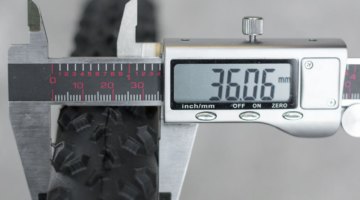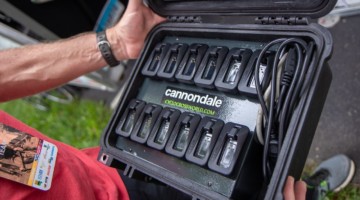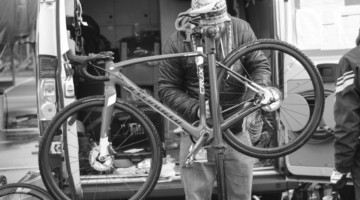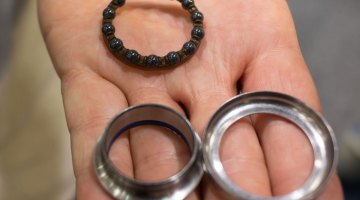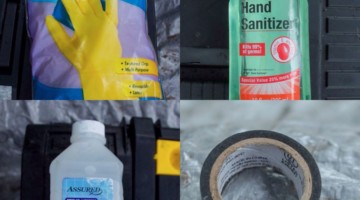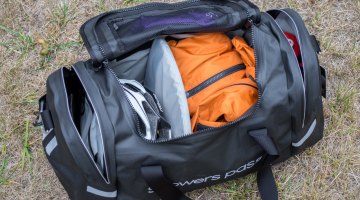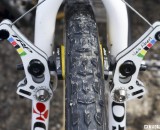
How can you get braking power with rim brakes? Niels Albert’s uses the TRP Revo-X carbon low-profile cantilever brakes to stop his Colnago Cross Prestige. © Cyclocross Magazine
Your question: I’m not ready to go to disc brakes, but I want to improve my braking. Are there any upgrades or changes I can make?
Answered by Drew Hager
Without knowing what exactly you are experiencing with these brakes, it would be hard for me to make a direct recommendation, but I can tell you many ways to squeeze out a little bit more performance from your rim brakes. Let’s start at the rim and move towards the lever.
Rim: first of all, make sure the rim is clean. If using alloy rims, I highly recommend the Mavic rim cleaning stone. If using carbon rims, clean with mild soap, not solvent or abrasives.
Pads: pads are a great place to find some more stopping power. Make sure the pads are set as high on the rim track as they can be for more leverage. Tow your pads in but not to drastically and re-adjust the tow-in as they wear. If using alloy rims, try some salmon “Scott Mathouser” compound pads. Missing from the market for some years, Kool Stop, Jaguar and Yokozuna have all resurrected this legendary brake pad material. Other good brake compounds exist for condition-specific purposes, so ask at the shop and stock up on pads for various weather conditions. Lastly, if using carbon rims it is imperative that you use the pads specified by the manufacturer of the rim!
Brake Arms: at the brake arms, you have many points of set-up that are easy to overlook. If your brake arms have multiple width settings, go narrow. When setting brake arm spring tension, you should keep the tension as low as you can, so that it takes less effort to pull.
Straddle Cable: keeping this cable as close to a 90 degree angle is generally accepted as the best angle to keep leverage high. Using a wider cable hanger allows you to keep the hanger lower if cable pull clearance is an issue.
Cables and Housing: Cables are the best bang for the buck as far as components to upgrade for better performance. Compression-less housing, cut as short as functionally possible (as long as it doesn’t create sharp angles), will make your brake cable move through from lever to brake with almost no wasted energy. There are many different types of compression-less housing, I cannot say one works better than the others but I will say that I find the best cables to use in these systems are plain ol’ un-coated stainless steel cables. Keep spares, replace often, and don’t let them stay dirty!
Brake Levers: Sometimes better brake power is simply in the set-up. A lower-end lever of one brand theoretically shouldn’t have any more leverage than the high-end one, but different brands do have different pull ratios. Everyone has different shaped hands and different length fingers so, when placing your levers on the bars don’t just consider the ergonomics of riding with your hands on the hoods, but where your fingers reach the lever. The further away for the pivot point that they are, the less effort your braking will be.
Clean and Lube: It goes without saying that after a muddy race or season, sometimes all the pivot points get gunked up which prevents your brake from springing back and clearing the rim, or staying centered. Plus, all that extra friction just saps some of the power from your hand that would normally go towards braking. So clean and lube the pivot points (bushings, brake posts, and internal springs) to keep everything running smoothly.
Most of the aftermarket cantilever and mini-V brakes for sale these days are great. When choosing a new set to upgrade with, go with a set that has a lot of adjustability so that you can experiment and troubleshoot. Figure out what exactly about your brake system you are hoping to resolve and make your upgrades based on those, but many issues can be resolved by set up and attention to where the problem is coming from.
Want some numbers to back up braking power? Check out our brake testing back in in Issue 7 and Issue 14 where CXM Labs quantifies the braking power of different brakes and straddle cable configurations.
Have any questions for our mechanic-in-residence? Ask them in the comment section below!























